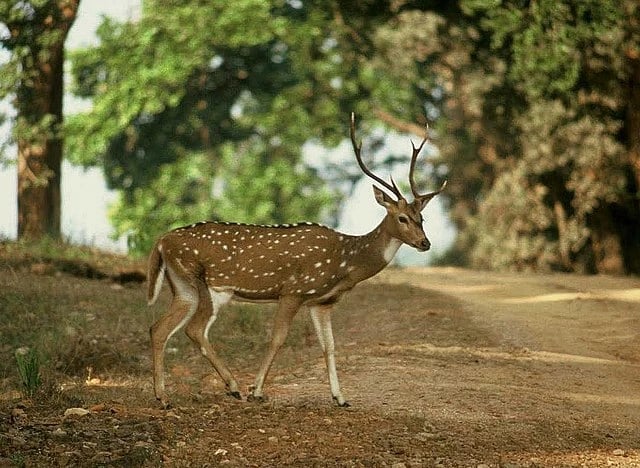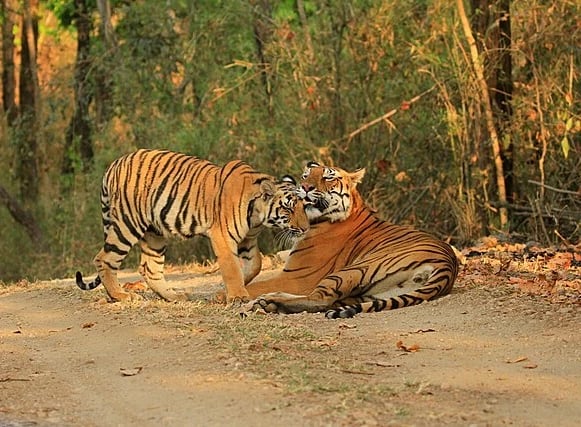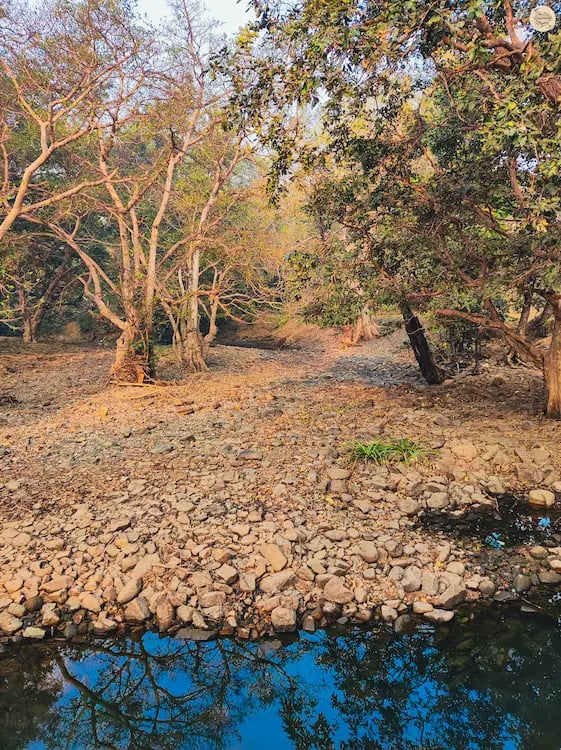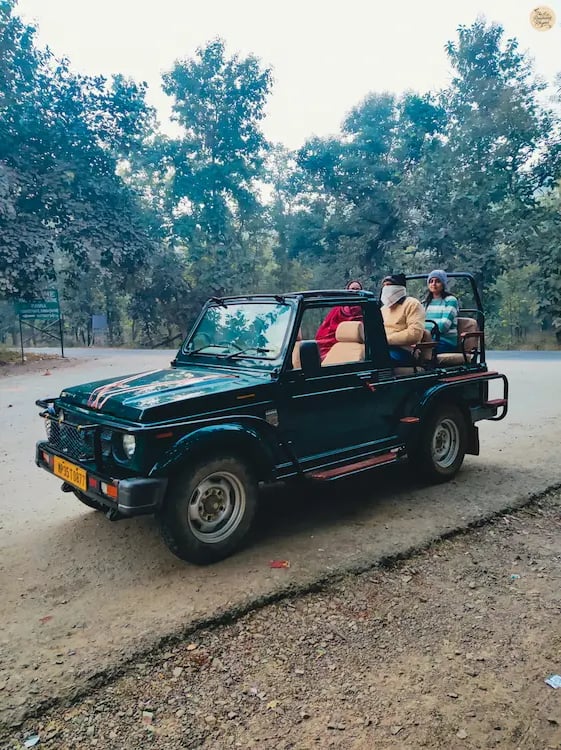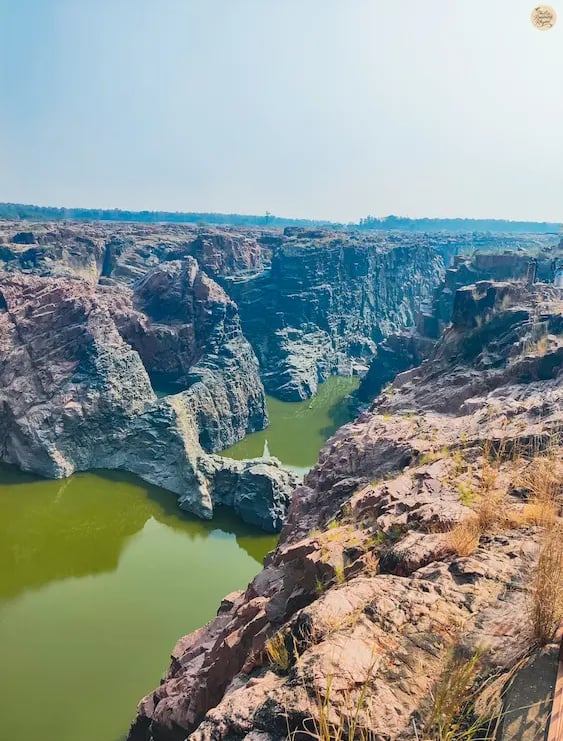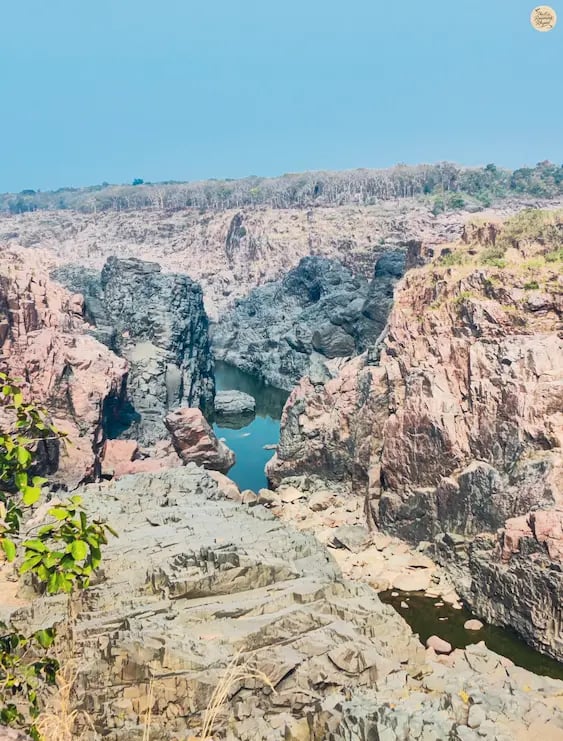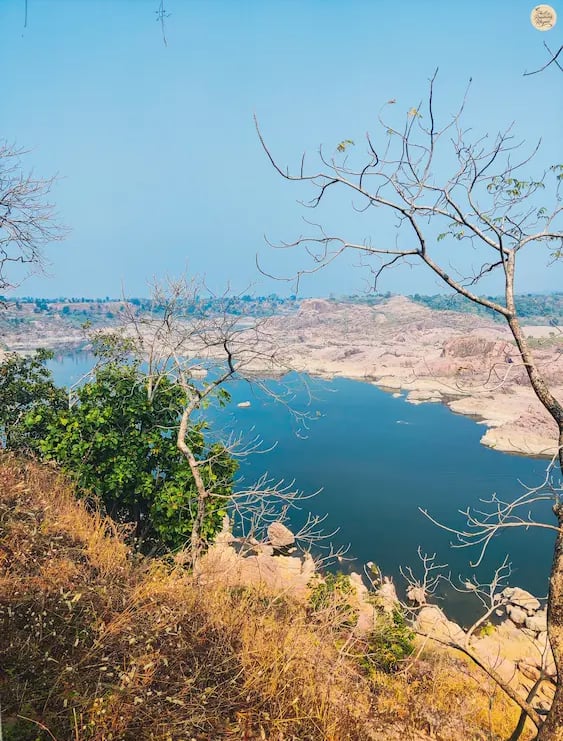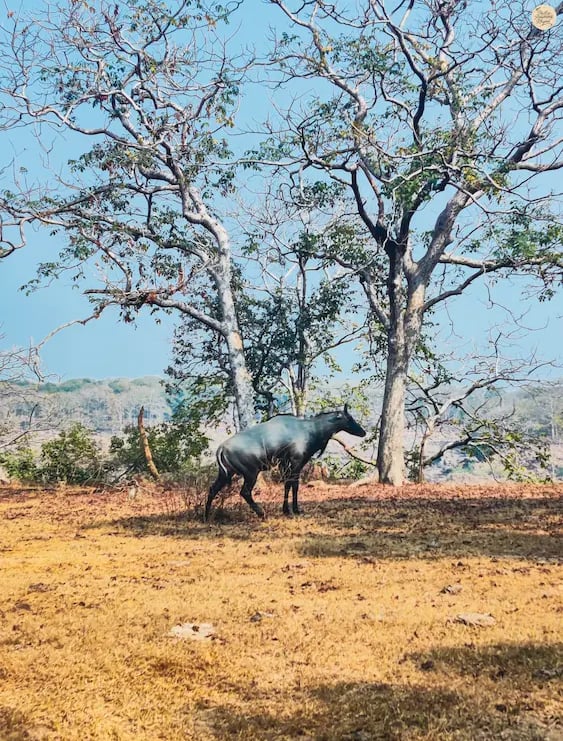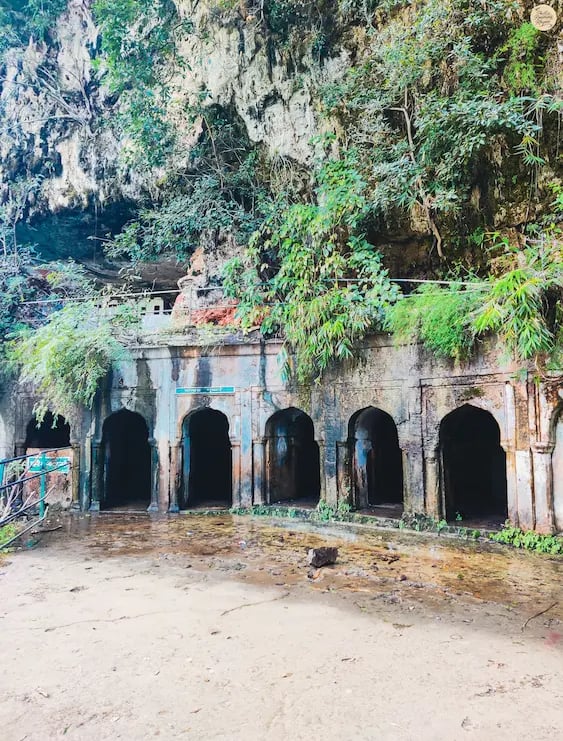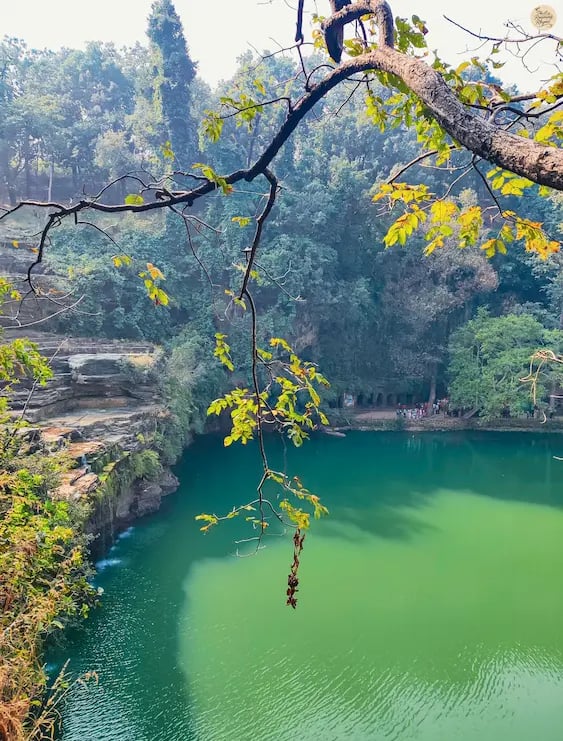Discover Panna National Park – Tiger Safaris, Hidden Waterfalls & Timeless Temples
Explore Panna — tiger safaris, Raneh & Pandav Falls, Timeless temples. Travel tips, how to reach & a 1-day itinerary for your perfect getaway— ideal for nature lovers & history buffs.
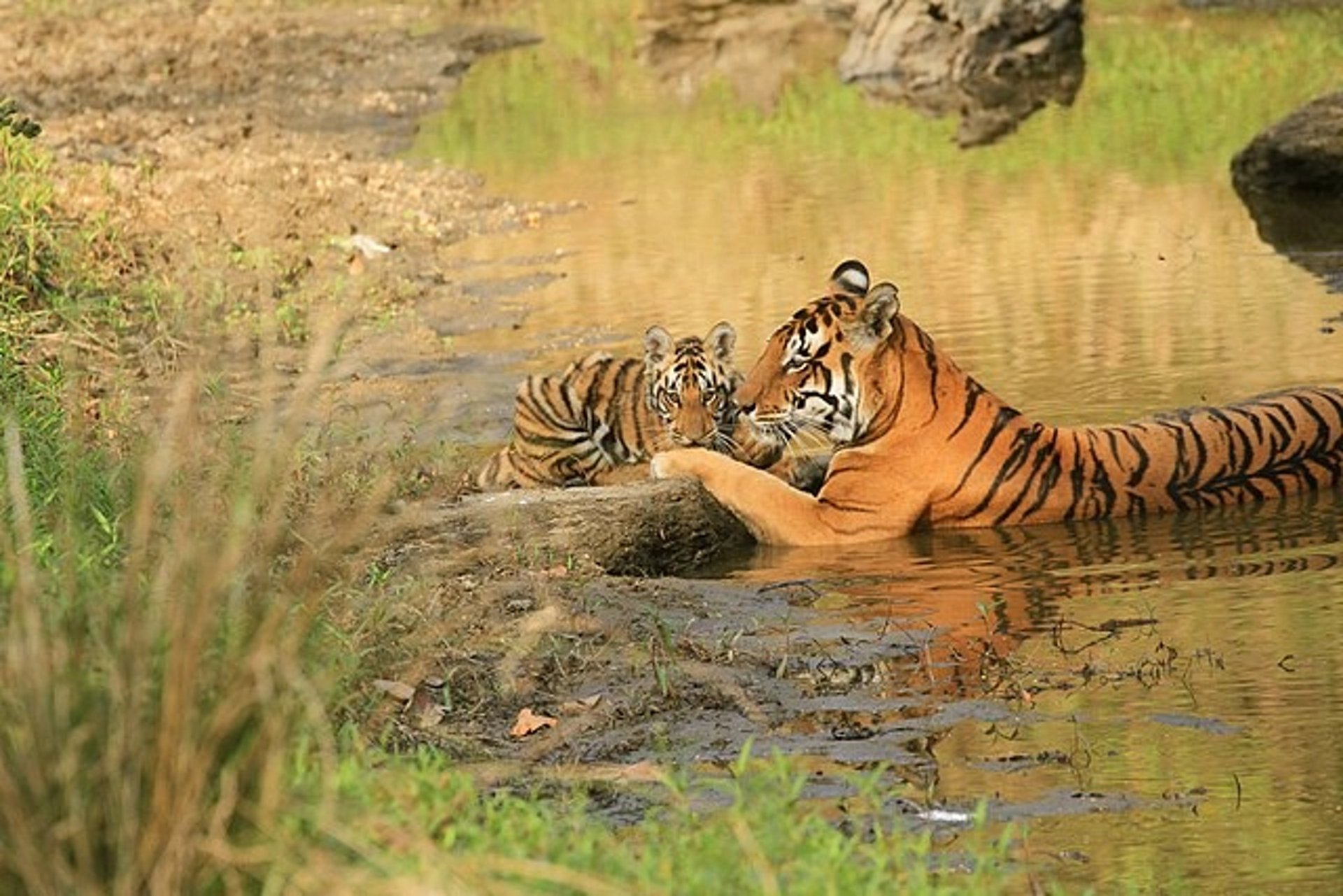
Panna National Park Travel Guide – Tiger Safaris, Hidden Waterfalls & Timeless Temples
A journey through Panna’s untamed jungles, hidden cascades, and centuries-old temple wonders.
Panna Unplugged – Where Wildlife Meets Temples & Waterfalls
In the heart of Madhya Pradesh, there’s a place known for two things — the wild beauty of the Panna Tiger Reserve, and the sparkle of its hidden diamond mines. But Panna is more than that. It’s a land where nature, history, and silence come together in the most magical way.
This region is home to ancient temples with a mix of Hindu and Muslim architecture, peaceful forests, and winding rivers. The mighty Ken River flows through the Panna hills, where the rare gharial — a long-snouted crocodile found only in the Indian subcontinent — silently watches the world go by.
Panna surprises you at every turn — with deep gorges, tall waterfalls, dry deciduous forests, and rocky plateaus that stretch as far as the eye can see. Its temples feel timeless, and its forests hold both calm and thrill. Whether you're here for a jungle safari in Panna National Park, a quiet escape, or simply following the trails of Madhya Pradesh Tourism, Panna welcomes you with open arms.
This is not just a destination — it’s a place where MP tourism truly comes alive, where the wild and the sacred share the same space, and where every step feels like part of a poem.
Updated on: 11th, Aug 2025
Explored on: Nov' 2024
Best Time to Visit Panna
Planning a trip to Panna National Park? The ideal time depends on whether your heart beats for wildlife safaris, majestic waterfalls, or ancient temples. Generally, the best season to visit is from October to June.
October to February is perfect for jungle safaris, temple exploration, and scenic getaways. The cool, pleasant weather makes it easy to spot animals in the Panna Tiger Reserve, enjoy serene sites like Pandav Falls and Raneh Falls, and explore the historic temples of Panna city. The forests stay lush, the skies are crystal clear, and the calm air makes sightseeing unforgettable.
March to June is the peak time for tiger sightings inside Panna Tiger Reserve. While the temperatures rise, wildlife activity increases near watering holes, making safaris exciting. This is also a great season to visit the Ken Gharial Sanctuary and enjoy panoramic Ken River views.
July to mid-October marks the monsoon season, when the park closes for safaris. But if you’re drawn to waterfalls, this is when Raneh Falls roars in full glory, and the landscape transforms into a lush green paradise. The temples surrounded by rain-washed greenery create a serene and spiritual setting.
Whether you’re here for Madhya Pradesh’s wildlife tourism, the cascading beauty of its waterfalls, or the rich cultural charm of ancient shrines, Panna offers unique experiences in every season.
How to Reach Panna
Panna, in the heart of Madhya Pradesh, is well connected by air, rail, and road — making it easy to reach whether you're visiting for the Panna Tiger Reserve, waterfalls, or temples.
By Air: The nearest airport is Khajuraho Airport (25 km from Panna National Park). It has regular flights to major cities like Delhi and Varanasi, offering a quick route for travelers planning a tiger safari or a cultural tour.
By Train: Khajuraho Railway Station (40 km) is the closest railhead, followed by Satna (75 km) and Jhansi (176 km). From these stations, taxis and buses are easily available to reach Panna city or the park’s Madla Gate.
By Road: Panna is well-connected by road to Khajuraho, Chhatarpur, and Satna. The short, scenic drive from Khajuraho to Panna offers glimpses of rural Madhya Pradesh and is perfect for those combining wildlife tourism with heritage sightseeing.
Whether you arrive by flight, train, or road trip, your journey to Panna National Park blends the thrill of the wild with the charm of cultural heritage.
Where to Stay in Panna – Jungle Camps, Eco-Lodges & Heritage Stays
Looking for the perfect base to explore Panna Tiger Reserve, Ken River waterfalls, or the temples of Khajuraho? Panna offers a range of accommodations — from luxury wildlife lodges tucked deep in the jungle to budget-friendly guesthouses near cultural landmarks. Whether your trip is about tiger safaris, river adventures, or temple trails, you’ll find a stay that matches your style and budget.
Luxury Wildlife & Riverside Lodges:
Taj Safari – Pashan Garh
Private stone cottages in the wilderness with curated jeep safaris and gourmet dining.
₹25,000 – ₹35,000/nightSarai at Toria
An eco-friendly riverside retreat near Raneh Falls, perfect for birdwatching and cultural day trips.
₹15,000 – ₹20,000/night
Mid-Range Jungle Retreats:
MPT Jungle Camp, Madla
Government-run lodge close to Madla Gate, ideal for early morning tiger safaris in Panna Tiger Reserve.
₹4,000 – ₹6,000/nightPanna Tiger Resort
Cozy forest cottages within easy reach of the park and Ken River boat rides.
₹4,500 – ₹6,500/nightV Resorts Camp Panna
Rustic tents offering a raw jungle vibe, great for nature lovers.
₹5,000 – ₹7,000/night
Budget Stays for Heritage & Wildlife Explorers:
Hotel Ram Sarovar (Panna Town)
Basic yet comfortable, close to Panna temples and local food joints.
₹1,000 – ₹1,800/nightGuesthouses in Khajuraho(25 km away)
Perfect if you’re combining Khajuraho’s UNESCO temples with wildlife tours in Panna.
₹800 – ₹2,000/night
💡 Travel Tip: If you’re planning both wildlife safaris in Panna and temple tours in Khajuraho, consider splitting your stay between a jungle lodge and a heritage hotel for the best of both worlds.
In Panna, where diamonds hide under ground,
The forest is alive with every small sound.
Morning brings tigers walking in mist,
And the Ken River flows with a gentle twist.
Through Madla’s paths, the safari rides,
Past tall teak trees and grassy sides.
The river turns bright at Raneh Falls,
Where colours shine on the canyon walls.
Close by, Pandava Falls sings low,
Telling old stories, the stones still know.
Five caves rest in the forest’s shade,
Where kings once stayed & plans were made.
By evening, temple bells softly ring,
At Baldeo Ji, where people sing.
And Jugal Kishore stands proud and tall,
With Vrindavan’s beauty in Bundelkhand’s call.


One Day in Panna – From Tiger Trails to Temple Bells
Short on time but big on adventure? A single day in Panna, Madhya Pradesh, is enough to witness its wild heart and soulful heritage. From a thrilling tiger safari in Panna Tiger Reserve to gazing at the roaring Ken River waterfalls, and ending the day at ancient Panna temples, this itinerary blends wildlife tourism with cultural exploration in one unforgettable loop.
The Forest Crown of Madhya Pradesh – Panna National Park
Madhya Pradesh holds the largest reserve forest area in India, and on its eastern side lies one of its most captivating gems — Panna National Park. Nestled in the rugged beauty of the Vindhyan Ranges and spread across the Panna and Chhatarpur districts, this sanctuary is a paradise for wildlife lovers and nature seekers alike, and a must-visit on any Madhya Pradesh tourism itinerary.
Declared the 22nd tiger reserve of India and the 5th in Madhya Pradesh, Panna has earned fame for its thriving tiger population, rich biodiversity, and serene jungle landscapes. Once on the brink of losing all its big cats, Panna is now home to 50+ tigers, making it one of the best places for tiger sightings in Central India. From the rustle of leaves to the melodic calls of exotic birds (over 200 bird species), and sometimes the distant roar of a tiger, the park offers an immersive wilderness experience.
Core and Buffer Zones – Understanding Panna’s Safari Landscape
Like other top tiger reserves in India, Panna is divided into:
Core Zones: Madla, Hinauta, Akola – prime habitats for tigers and leopards
Buffer Zones: Akola, Jinna – ideal for eco-tourism, night safaris, and community-led experiences
The Madla Zone is the heart of Panna — just 25 km from Khajuraho — offering the highest tiger sighting chances along with views of the Ken River gorges. Unique to Panna, its three core zones are interconnected, allowing mid-safari movement between Madla, Hinauta, and Akola depending on wildlife activity.
Safari Timings, Tickets & Essential Information
Safari Booking:
Online: forest.mponline.gov.in
Offline: Available at gates (advance booking strongly recommended, especially for Madla Gate)
Fees:
Safari Gypsy: ₹2,500 per vehicle
Guide Fee: ₹480 (mandatory)
Entrance Fee: Weekdays ₹2,450, Weekends ₹3,050
Timings:
Summer (Feb–June): 6:00–10:00 AM & 2:30–5:30 PM
Winter (Oct–Jan): 6:30–10:30 AM & 1:30–5:30 PM
Closed: July 1 – Sept 30 (monsoon)
Wildlife Encounters – Beyond the Bengal Tiger
A Panna jungle safari is a window into the lives of both predator and prey. Apart from tigers, visitors may spot:
Leopards moving like shadows
Packs of wild dogs (dholes)
Sloth bears forage quietly
Hyenas and wolves on the prowl
Rare chousingha (four-horned antelope), chinkara, nilgai, sambar, and chital
For bird lovers, Panna is a paradise, with sightings of:
Asian paradise flycatcher
Bar-headed goose
Blossom-headed parakeet
Slaty-headed scimitar babbler
Vultures soaring over the cliffs
Panna Tiger Reserve isn’t just a place to tick off your wildlife list — it’s a place to feel. A place where the Ken River hums, where forest shadows dance, and where every safari is a brushstroke on the canvas of the wild.
Whether you’re here for tiger spotting in Panna, bird photography, or simply to breathe in the scent of the earth after rain, this reserve invites you to slow down and listen to the language of the wild.
Spotted deer crossing a forest trail in Panna Tiger Reserve -
Image by Altaipanther via Wikimedia Commons
Bengal tigers sharing a tender moment in the wild at Panna National Park -
Image by Davidvraju via Wikimedia Commons
Mirror of the Forest – Still Waters of Panna Tiger Reserve
Misty Morning Safari – Chasing the Wild in Panna Tiger Reserve
Raneh Falls – The Hidden Canyon of Central India
Just 25 km from Panna Tiger Reserve and a short drive from the Khajuraho temples, Raneh Falls is one of Madhya Pradesh’s most underrated attractions. Known as the “Grand Canyon of India,” this geological wonder is carved by the Ken River into a breathtaking, multicoloured gorge — a natural masterpiece unlike anywhere else in Asia.
After a thrilling tiger safari in Panna, swap the roar of the jungle for the quiet drama of stone and water. Here, the Ken River has etched a 5 km-long crystalline canyon through ancient volcanic rock, revealing striking granite in shades of pink, red, grey, black, and green. Some cliffs plunge as deep as 30 metres, creating a rare geological mosaic shaped millions of years ago by volcanic activity.
The story of Raneh Falls was written millions of years ago in fire, formed by volcanic activity, layered with five types of igneous rock converging in one place. Today, the river gently continues that ancient sculpting, flowing through the gorge like a painter with water and light.
Whether you’re a nature photographer, geology enthusiast, or a casual traveller looking for offbeat places near Khajuraho or Panna Tiger Reserve, Raneh Falls offers a peaceful yet awe-inspiring escape.
Raneh Falls – Ken River’s Colorful Canyon near Panna Tiger Reserve
Granite walls, wild river, and the heart of Panna – Raneh Falls
Why Visit Raneh Falls
Gharial Point Trail – Wildlife & River Views
Cross to the far side of Raneh Falls, and you’ll find a quiet forest path — a short and scenic walk that leads to the Gharial Viewpoint. It's a soft adventure, perfect for families or solo wanderers.
This scenic trail leads to Gharial Point, where you can spot gharial crocodiles and marsh crocodiles basking in the Ken River. Along the path, look out for spotted deer, nilgai, and mongoose darting through the brush. Hiring a local guide enhances the experience and helps you discover hidden wildlife.
Scenic view of Ken River canyon from Gharial Point, Panna
Nilgai in the Shadows – Spotted on the Way to Gharial Viewpoint
Raneh Falls Entry Fee & Timings
Entry Fee:
Indians: ₹50 per person
Foreigners: ₹200 per person
Vehicle Entry: ₹300 per car
Guide Fee: ₹100–₹200 (recommended)
(Carry cash as digital payments may not work.)
Opening Hours:
Daily: 6:00 AM – 6:00 PM
Wednesday: Open until noon only
(During heavy rain, certain viewpoints may close for safety.)
Pandav Falls – Where Legends Flow with the Water
Just a short drive from Panna Tiger Reserve’s Madla Gate and about 30 km from Khajuraho, Pandav Falls is a serene blend of natural beauty, mythology, and history. Tucked into a quiet forest gorge, this 30-meter waterfall cascades into a clear, green pool fed by a Ken River tributary — a perfect spot to pause after your safari or temple tour.
Mythology & History in One Place
According to local legend, the Pandavas from the Mahabharata spent part of their exile here. Five natural rock caves near the waterfall are believed to have been their shelters — cool, shaded, and still holding a sacred stillness.
Pandav Falls also played a role in India’s freedom struggle. On 4 September 1929, Chandrashekhar Azad and fellow revolutionaries held a secret meeting here. Today, a small statue of Azad near the entrance honours his bravery.
The Walk Down Pandav Falls
From the parking area, a well-paved path with around 294 steps (and a gentle ramp for easier access) leads you down into the gorge. Along the way, the sound of the waterfall grows louder while birdsong and forest shade accompany you.
At the base, the scene opens up — layered rock cliffs, a plunging waterfall, and a mirror-calm pool surrounded by greenery. It’s a tranquil setting, ideal for nature photography, quiet reflection, or simply resting in the cool air.
Pandav Falls Entry Fee & Timings
Entry Fee:
Indians: ₹50 per person
Foreigners: ₹200 per person
Vehicle Entry: ₹300 per car
Guide Fee: ₹100–₹200 (optional)
(Carry cash, as online payments may not work.)
Opening Hours:
Daily: 6:00 AM – 6:00 PM
Wednesday: Closes at 12 noon
(During heavy rain, check locally before visiting.)
Five Sacred Caves of Pandav Falls – Legends Alive in Panna’s Wilderness
Pandav Falls – Emerald Waters and Legends in Panna’s Forest
Baldeo Ji Temple – A Gothic Whisper in Stone
In the heart of Panna city, far from the tiger trails and waterfalls, stands one of Madhya Pradesh’s most unique temples — Baldeo Ji Temple. Known for its rare fusion of Roman architecture and Gothic design, the temple feels more like a European cathedral than a traditional Hindu shrine.
Built on a raised stone platform, it offers darshan even from outside the main gate — a feature that reflects thoughtful accessibility. Inside, the Maha Mandapa rises on grand pillars, its arches blending east and west in perfect harmony.
At its sanctum, the idol of Shri Baldevji, carved from rare black shaligrami stone, radiates an aura of peace. Local devotees believe that even a single glimpse brings serenity to the heart.
This Bundela-era architectural gem is more than a place of worship — it’s a living testimony to the artistic blend of devotion, design, and cultural exchange in 18th-century Panna.
Baldeo Ji Temple Timings
Morning Aarti: 5:30 AM & 7:30 AM
Evening Aarti: 7:00 PM
(Open through most of the day for peaceful visits.)
Jugal Kishore Ji Temple – A Glimpse of Vrindavan in Bundelkhand
Just a short ride from Baldeo Ji Temple lies another spiritual landmark — Jugal Kishore Ji Temple. Built between 1758 and 1778 by Raja Hindupat Singh, the fourth Bundela king of Panna, this temple carries both royal heritage and divine legend.
The idol of Lord Krishna enshrined here is believed to have journeyed from Vrindavan through Orchha before finding its home in Panna. Adorned in traditional Bundelkhandi attire and ornaments, the deity is a vision of elegance and devotion.
The temple follows Bundela-era design with a Nat Mandapa (dancing hall), Bhog Mandapa (offering hall), and Pradakshina Path (circumambulatory path) — each echoing centuries of prayer and artistic excellence.
Whether you come to admire its carvings, witness the aarti, or sit in meditative silence, Jugal Kishore Ji Temple offers a deep sense of spiritual calm in the bustling city.
Jugal Kishore Ji Temple Timings
Morning Aarti: 5:00 AM & 7:00 AM
Afternoon Aarti: 12:00 PM
Evening Aarti: 7:00 PM
(Open from early morning to late evening.)
Travel Tips for Exploring Panna
Exploring Panna is a blend of wilderness, water, and worship — and a few mindful preparations will help you make the most of it:
Book Safaris in Advance: Safari permits, especially for the popular Madla zone, sell out quickly. Book online at forest.mponline.gov.in or arrive early at the gate for same-day tickets, but don’t rely on last-minute plans.
Pack Smart: Bring comfortable, lightweight clothing in earthy tones for safaris. Don’t forget sun protection — hats, sunscreen, and sunglasses. Early mornings and evenings can be chilly, so pack a light jacket.
Respect Wildlife and Nature: Keep noise to a minimum during safaris, never feed animals, and stay inside your vehicle unless instructed otherwise. Preserve the tranquility of the forest and cultural sites.
Photography Gear: Carry binoculars and a good zoom lens if you’re keen on wildlife or bird photography. Sunrise and sunset offer the best natural light for capturing the park’s beauty.
Stay Connected: Mobile network coverage may be patchy inside the tiger reserve and remote areas. Inform someone about your itinerary and expected return times.
Cash Is King: Digital payments aren’t always accepted at parks, ticket counters, and small eateries. Carry sufficient cash for entry fees, guides, and local purchases.
Respect Local Customs: When visiting temples like Baldeo Ji and Jugal Kishore Ji, dress modestly and follow temple etiquette. Photography may be restricted inside some shrines.
Local Cuisine and Hydration: Try local Bundelkhand dishes at Panna’s eateries, but always drink bottled or purified water. Carry snacks and water during safaris or day trips.
In Panna, every path leads to a story — some written in pawprints, others etched in stone.
It’s a land where the roar of the wild blends with the whispers of ancient temples, where nature and heritage walk hand in hand. Whether you come seeking the thrill of spotting a tiger or the serenity of sacred shrines, Panna offers moments that will stay with you long after you’ve left.
So, will you answer Panna’s call? Pack your curiosity, follow the trails, and let your own story unfold in this timeless corner of Madhya Pradesh.
Frequently Asked Questions – Panna Travel Guide
Q. Where is Panna Tiger Reserve located?
A. Panna Tiger Reserve is located in Madhya Pradesh, India, nestled in the Vindhya Hills near the town of Panna.
Q. What is the best time to visit Panna Tiger Reserve?
A. The ideal time to visit Panna National Park is from October to June. The reserve closes during the monsoon season from July to September.
Q. Why is Panna National Park famous?
A. Panna National Park is famous for its remarkable tiger comeback under Project Tiger and its rich biodiversity.
Q. How do I go to Panna from Khajuraho?
A. Panna National Park is about 45 km from Khajuraho, and the journey takes roughly 1–1.5 hours via National Highway 39. You can reach it by private taxi or local bus.
Q. How do I book a safari in Panna Tiger Reserve?
A. Safaris can be booked online at the official portal forest.mponline.gov.in or offline at the reserve gates. Advance booking is recommended, especially for the popular Madla zone.
Q. What wildlife can I expect to see during the safari?
A. Apart from tigers, you may spot leopards, sloth bears, hyenas, wild dogs, various deer species, and over 200 bird species, including the rare gharial crocodile, along the Ken River.
Q. Are there any restrictions inside the reserve?
A. Visitors must be accompanied by a certified forest guide, follow park rules, and respect wildlife habitats. Core zones remain closed during the monsoon for safety.
Q. Is Panna good for tiger sighting?
A. Yes, Panna National Park is great for tiger sightings, with rising tiger numbers.
Q. Which Zone is best in Panna National Park?
A. The Madla zone is generally considered the best zone for tiger sightings in Panna National Park.
Q. Which is the nearest station to Panna National Park?
A. The nearest railway station to Panna National Park is Khajuraho Railway Station, which is approximately 40 kilometers away.
Q. What are the Panna National Park's nearby attractions?
A. Just an hour from Panna, visit the UNESCO-listed Khajuraho Temples for stunning carvings, and explore Raneh Falls & Pandav Falls.
Share Your Thoughts – We’d Love to Hear From You!
Every journey is better when shared.
We hope you enjoyed this travel story — now, we'd love to hear yours! Share your experience, suggestions, or feedback and help us make our travel tales even better.

